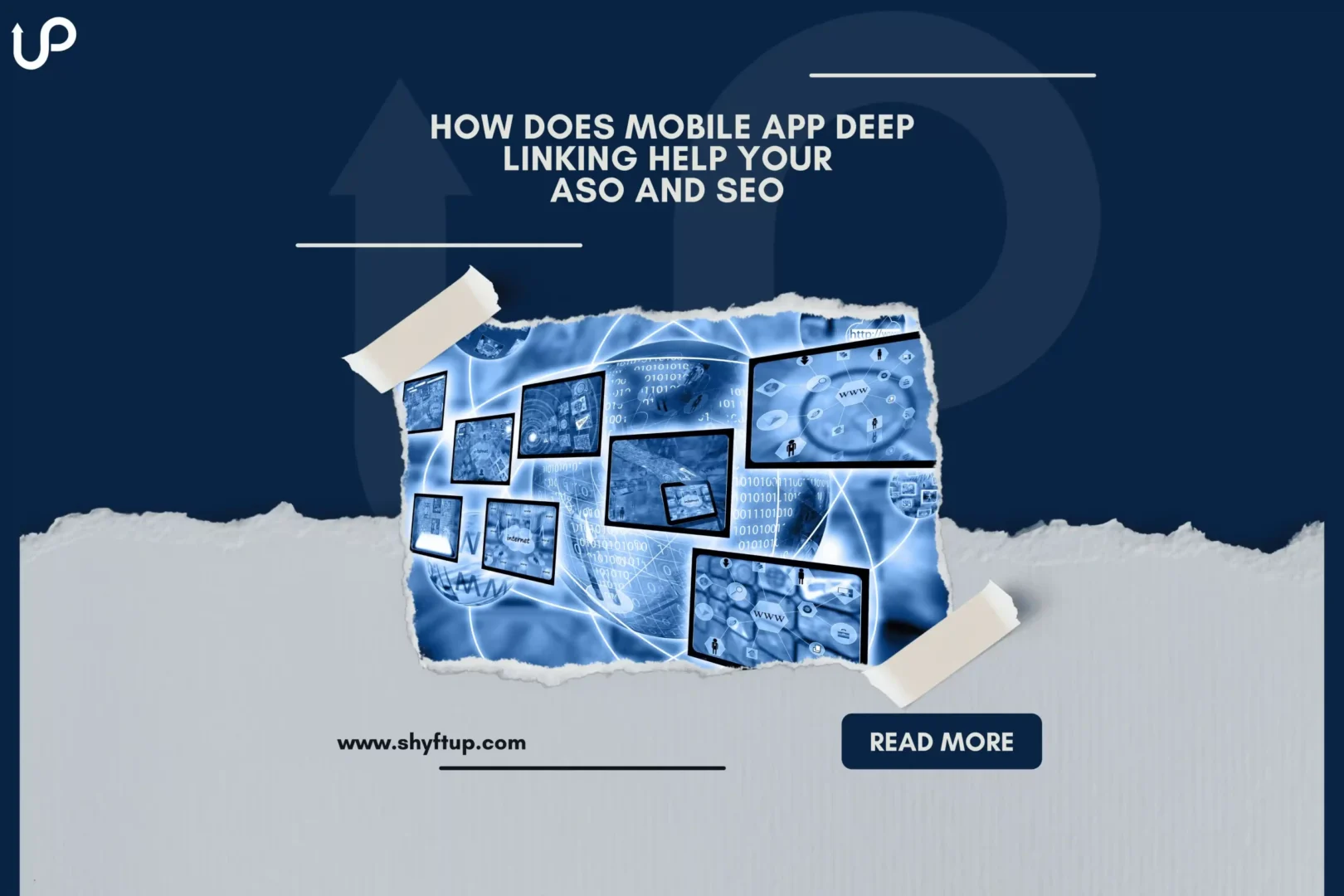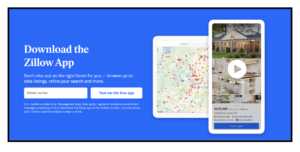
“Optimization” is the primary word at the center of SEO and ASO. The latter applies to the app stores, while SEO determines website ratings. Developers who know what they’re doing strive to uplift both in parallel for the best-integrated results.
Numerous considerations start with keyword strategy and meta descriptions that impact both platforms. App Store ratings also embrace your activities around screenshot presentations, in-app purchase promotions, and using Apple and Google Play fill-ins effectively. Finally, deep linking (this article’s central focus) is a category crucial to both your ASO and SEO performance.
In summary – understanding the dynamics of this tool will provide:
- Insights into combining your SEO and ASO efforts effectively
- Better app visibility
- Guidelines for your app to emerge close to the top of relevant search results
The App Store Competition Pace is Insane!
Many app developers believe that launching a new technology or game is the best thing to hit the world since Uber replaced traditional taxi services. They’ve convinced themselves their team has covered the hard yards – the rest is plain sailing. Don’t make that cardinal error. Indeed, your journey to success has hardly started. Granted, app success is practically zero without a unique set of benefits. However, having them doesn’t guarantee market traction. Why? Because you still have to communicate your message compellingly to an engaged audience, and that’s no slam dunk!
The competition intensity in the app stores (i.e., Google Play and Apple) is mind-boggling! More than five million apps (in aggregate) and billions of downloads annually make it arguably the most cut-throat marketplace globally. On top of that, Microsoft’s and Amazon’s app stores display around a million competing apps.
While the crowded app space represents a daunting challenge for newcomers to find a comfortable place, emerging head-and-shoulders above the pack promise extraordinary rewards. And it’s not impossible if you’re methodical in your approach. So here’s our first piece of advice: When an opportunity knocks, open the door and grab it with both hands, mainly if it provides a competitive edge. Sometimes it only arrives once, never to return. One such opportunity, as demonstrated here, is App Deep Linking.
What is Deep Linking, and How Can It Help Your Mobile App?
A. What it is
Deep linking deploys Search Engine Results Pages (SERPs) as an effective method for redirecting people as visitors to your website and app store page. It’s an ideal meeting place for ASO and SEO and, as such, functions as a vehicle that can project you into the arena with a fighting chance.
B. How it works
Understanding the tool’s inner workings pays massive dividends, and there are numerous options and avenues one can take. But, of course, it depends on the device, pre-or post-installation, and other considerations. So let’s get to it:
1. Deep linking in web results.
In most cases, we search for an app on the web. A link that gets you to the App Store when we do. For example, let’s search for “Zillow” on Google; a likely search result is as follows:

In this case, we assume the user hasn’t yet downloaded it. So, click on “app-download” and it takes you to:

Google Play (Android) or Apple (iOS) will instantly direct you to the relevant platform for the app download based on your mobile number. So what you have is a deep linking process in motion.
2. Deep linking in mobile search results.
Two possibilities exist when searching this way:
- No App installation at that point: If this is the case, you get the option to download the app either through The App Store or Google Play. The moment you hit the install button, it will take you to the appropriate location for the process to kick off.
- If the installation is already up and running on your device: it would show as ‘installed.” Tapping on the link will straightaway open the app on your device via the Apple or Google app store (whichever applies).
C. Okay! I get the App Deep Linking theme. How do I get it into my promotional strategy?
So, it’s not automatic. You have to implement a deep linking plan to realize the benefits, which are many:
- Deep linking increases your visibility: It’s an easy way for browsers to discover your app on the web and in the app stores. They often say that all paths lead to Rome. Adopting that analogy, deep linking done right will take the audience to your central proposition one way or another.
- Nothing could be easier – once you go through the motions of inserting it into your system (see below). You can seamlessly transition between browsers to app stores at the click of a button – a compelling feature. When there’s no thinking or complications involved, the more likely it is that the audience will investigate further.
- The more they see you, the more they’ll install you: This hardly needs an explanation; it’s common sense. Conversions and downloads tie in closely to the traffic volume, and your app growth will propel you forward.
- It jogs your users’ memory: Out of sight is out of mind, even if the people have downloaded the app. In the app world, memory is sometimes a matter of minutes, hours if you’re lucky, rarely much longer than that. The competition interference and potential disruption of audience engagement is a stark reality.
So, deep linking is an ideal remedy for addressing short recall; it keeps your brand popping up in related searches. Don’t lose the opportunity to remind users you’re still around and a preferable choice. It’s even more crucial if the searcher hasn’t downloaded you yet. You want to be somewhere in the mix when the decision is going down.
A recent study covering 1.5 billion devices and 25,000 apps confirmed the market behavior patterns above; a download doesn’t mean usage forever.
- Close to 20% of users download apps only once.
- On the other side of the coin, 40% of users deploy it more than eleven times.
- Meaning that 60% of customers use the app eleven times or less.
- And 40% of users engage with the app two to eleven times, then stop.
- The more app users download your app, the higher you will likely rank on Google Play and The App Store. It’s not another chicken or the egg story (i.e., which came first). Suppose you focus on getting your deep linking into the mix. In that case, it will undoubtedly bolster your standings everywhere in the digital space.
- Greater security with deep linking because competitors can’t pirate your links and divert searchers to their apps.
So We Come to the Central Question, How Do I Execute an Effective Deep Linking Strategy?
Deep links coding applies differently to the cases of an app already installed or not yet installed. It’s a complicated procedure even with guidance from Google’s developers’ support. However, with perseverance, everyone who tries seems to navigate the process successfully.
For website (SEO) searches:
- The URLs remain the same whether you are Android or iOS.
- Good coding ensures that web campaigns won’t have any hassle taking users coming through Search, Shopping, and Display campaigns directly to the apps (as long as they’re installed).
- Alternatively, it will connect to the “Install now” section (if not installed).
For mobile AOS searches:
- Developers structure App Deep Linking IOS by indexing with the Universal Links feature, connecting an app in the App Store to Siri search, Spotlight, and Safari.
- Also, for Google Play, you have to manipulate the code so that it’s easy to respond to Google’s request the instant your app plays into the search results after a query.
SEO Helps ASO and Visa Versa – Downlinking Provides Considerable Assistance to Both.
From an SEO perspective, deep links have no role in supporting or boosting your app’s ranking. However, it’s impossible to automatically traverse to the app location if they’re not there in your search result.
As an app owner, you don’t know how potential users get to you. Perhaps SEO keyword configurations make the site a more significant capture spot. The thing is this: You do your best on SEO and ASO, and once the user locks on to the search result, the next step is to go straight to the money – the downloaded app or the store prompt for downloading. The deep links pipeline is the thing that gets you there (as long as you’ve done your job and built them into the system correctly).
Conclusion
Mobile promotion is a multi-faceted process that involves integrating actions simultaneously or timed sensibly. It brings deep linking, keyword strategy, digital advertising through social media, in-app promotions, and screenshot optimization into play. Developers understand that it takes an all-embracing approach to achieve the best results. This article focused on deep linking as one of the critical tools available within a total program. However, applying it effectively depends on following the guidelines provided above.
To fill in gaps, talk to ShyftUp – a leading global User Acquisition Agency. They’ll help you decide on the best deep linking strategy for your app portfolio. ShyftUp focuses on two primary services:
- App Store Optimization (ASO) – unleashing the power of organic user growth by creating boosted visibility on the app stores
- Paid User Acquisition – to help you grow your user base by converting your paid marketing budget into real users, thus revenue. ShyftUp specializes in Apple Search Ads and Google UAC channels.
Deep linking is deploying Search Engine Results Pages (SERPs) as an effective method for redirecting people to visit your website and app store page. It's an ideal meeting place for ASO and SEO and a vehicle that projects you into the game with a fighting chance.
There are several compelling benefits: Better app store and website visibility. The more users see you, the more they'll install your app. With more installations, your ranking chances improve considerably. Also, it jogs users' memory to continue using the app. Deep linking is a vital tool that facilitates browsers finding you on the web or through a mobile promotion, say on social media. Finally, deep linking also provides better security because competitors can't pirate your links and divert searchers to their apps. What is deep linking in ASO?
What are deep linking benefits?
The App Store Competition Pace is Insane!
What is Deep Linking, and How Can It Help Your Mobile App?
1. Deep linking in web results.
2. Deep linking in mobile search results.
C. Okay! I get the App Deep Linking theme. How do I get it into my promotional strategy?
So We Come to the Central Question, How Do I Execute an Effective Deep Linking Strategy?
SEO Helps ASO and Visa Versa - Downlinking Provides Considerable Assistance to Both.